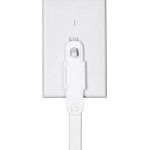How to Spray Paint Wicker Furniture
Wicker furniture offers a timeless aesthetic appeal, suitable for both indoor and outdoor spaces. However, over time, the original finish can fade, chip, or become outdated. Spray painting provides an efficient and cost-effective method to revitalize wicker furniture, extending its lifespan and refreshing its appearance. This article details the necessary steps involved in successfully spray painting wicker furniture, ensuring a professional and durable finish.
Preparation is paramount for achieving optimal results. Thoroughly cleaning and preparing the wicker surface significantly improves paint adhesion and longevity. Rushing this stage can lead to uneven coverage, peeling, and ultimately, a less desirable outcome.
Key Point 1: Thorough Cleaning and Preparation
Before commencing the painting process, the wicker furniture must be meticulously cleaned. This involves removing any dirt, dust, mildew, or loose paint that may be present. The accumulation of these substances interferes with the paint's ability to bond effectively with the wicker, potentially leading to future paint failure.
Begin by using a brush with stiff bristles to remove loose debris. A vacuum cleaner with a brush attachment can also be employed to extract dust from the intricate weaves of the wicker. Pay particular attention to crevices and areas where dirt tends to accumulate.
For deeper cleaning, prepare a solution of mild soap and water. Dish soap is generally suitable for this purpose. Moisten a soft cloth or sponge with the soapy water and gently scrub the entire surface of the wicker furniture. Avoid using excessive water, as prolonged exposure to moisture can damage the wicker fibers, especially if the furniture is made from natural materials.
If mildew is present, add a small amount of bleach to the soapy water solution. Exercise caution when handling bleach, wearing gloves and eye protection. Test the bleach solution in an inconspicuous area first to ensure it does not discolor the wicker. Thoroughly rinse the cleaned areas with clean water to remove any remaining soap or bleach residue. Allow the wicker furniture to dry completely before proceeding to the next step.
Once the furniture is dry, inspect the surface for any loose or peeling paint. Use a scraper or sandpaper to remove these imperfections, creating a smooth and even surface for painting. Sanding also helps to create a slightly rough texture, which further enhances paint adhesion.
Finally, wipe down the furniture with a tack cloth to remove any remaining dust or sanding debris. A tack cloth is a slightly sticky cloth specifically designed for this purpose. This ensures a clean and contaminant-free surface, ready to receive the primer and paint.
Key Point 2: Priming for Optimal Adhesion and Coverage
Applying a primer is a crucial step in spray painting wicker furniture, especially if the furniture has been previously painted or if it is made from a material that is not naturally receptive to paint. Primer creates a uniform surface, seals the wicker, and provides a strong bond for the topcoat of paint.
Select a primer that is specifically designed for use on the type of material from which the wicker furniture is constructed. For example, if the furniture is made from natural wicker, a primer formulated for wood is generally appropriate. If the furniture is made from resin wicker, a primer designed for plastic may be necessary. Consult the product labels for specific recommendations.
Apply the primer in thin, even coats, following the manufacturer's instructions. Hold the spray can approximately 8-10 inches away from the surface of the wicker furniture and use a smooth, sweeping motion to apply the primer. Overlapping each pass slightly ensures complete coverage. Avoid applying too much primer in one coat, as this can lead to drips and runs.
Allow the primer to dry completely according to the manufacturer's instructions. This may take several hours, depending on the specific type of primer used and the ambient temperature and humidity. Once the primer is dry, inspect the surface for any imperfections, such as drips or runs. Lightly sand these imperfections with fine-grit sandpaper to create a smooth surface.
Consider applying a second coat of primer, especially if the original finish on the wicker furniture was dark or uneven. This provides an even more uniform surface for the topcoat of paint and helps to prevent the original color from bleeding through.
After the final coat of primer has dried, wipe down the furniture with a tack cloth to remove any dust or sanding debris before proceeding to the painting stage.
Key Point 3: Application of Spray Paint for a Durable Finish
Selecting the appropriate paint is critical to achieving a durable and aesthetically pleasing finish on wicker furniture. Opt for a paint that is specifically designed for outdoor use, particularly if the furniture will be exposed to the elements. These paints are formulated to withstand fading, chipping, and cracking caused by sunlight, moisture, and temperature fluctuations.
Consider using a paint with a built-in primer, as this can simplify the painting process and reduce the overall time required. However, even with a paint that includes a primer, it is still generally recommended to apply a separate primer coat for optimal results.
Apply the paint in thin, even coats, following the manufacturer's instructions. As with the primer, hold the spray can approximately 8-10 inches away from the surface of the wicker furniture and use a smooth, sweeping motion to apply the paint. Overlap each pass slightly to ensure complete coverage. Avoid applying too much paint in one coat, as this can lead to drips and runs.
Pay close attention to the intricate weaves and crevices of the wicker furniture, ensuring that these areas are adequately coated with paint. You may need to adjust the angle of the spray can to reach these areas effectively.
Allow the first coat of paint to dry completely according to the manufacturer's instructions. This may take several hours, depending on the specific type of paint used and the ambient temperature and humidity. Once the first coat is dry, inspect the surface for any imperfections, such as drips, runs, or uneven coverage. Lightly sand these imperfections with fine-grit sandpaper to create a smooth surface.
Apply a second coat of paint to ensure complete and uniform coverage. The second coat also helps to enhance the durability of the finish. Follow the same application techniques as with the first coat, and allow the paint to dry completely.
For added protection and durability, consider applying a clear coat sealant after the paint has completely dried. This provides an extra layer of protection against scratches, fading, and moisture damage. Choose a sealant that is specifically designed for outdoor use and follow the manufacturer's instructions for application.
Allow the painted wicker furniture to cure completely before using it. Curing is the process by which the paint hardens and fully bonds with the wicker surface. This may take several days, depending on the specific type of paint and sealant used. Consult the product labels for specific curing times.
While spray painting, ensure adequate ventilation in the work area. Work outdoors or in a well-ventilated garage or shed. Wear a respirator mask to avoid inhaling paint fumes. Protect surrounding surfaces with drop cloths or plastic sheeting to prevent overspray.
Clean the spray nozzle according to the manufacturer’s instructions after each use to prevent clogging. Inverting the can and spraying until only propellant is released often helps. Store leftover paint in a cool, dry place, away from direct sunlight and extreme temperatures.
Regular maintenance, such as cleaning and occasional touch-ups, will extend the life of the painted finish and keep the wicker furniture looking its best for years to come. Periodically inspect the furniture for any signs of damage or wear and address these issues promptly to prevent further deterioration.

How To Spray Paint Wicker Refresh Restyle

How To Spray Paint Resin Wicker Chairs If You Dare

How To Spray Paint Wicker Furniture

How To Paint Wicker Porch Makeover Beingbrook

Diy Whitewash Wicker Chair Patio Furniture Makeover On A Budget

The Fastest And Easiest Way To Paint Wicker Furniture

30 Thursday A Spray Painted Wicker Chair House By Hoff

How To Paint Wicker Furniture Quickly And Easily H2obungalow

One Day Patio Furniture Makeover With Spray Paint

A Spray Painted Wicker Chair Diy Tutorial Infarrantly Creative
See Also








